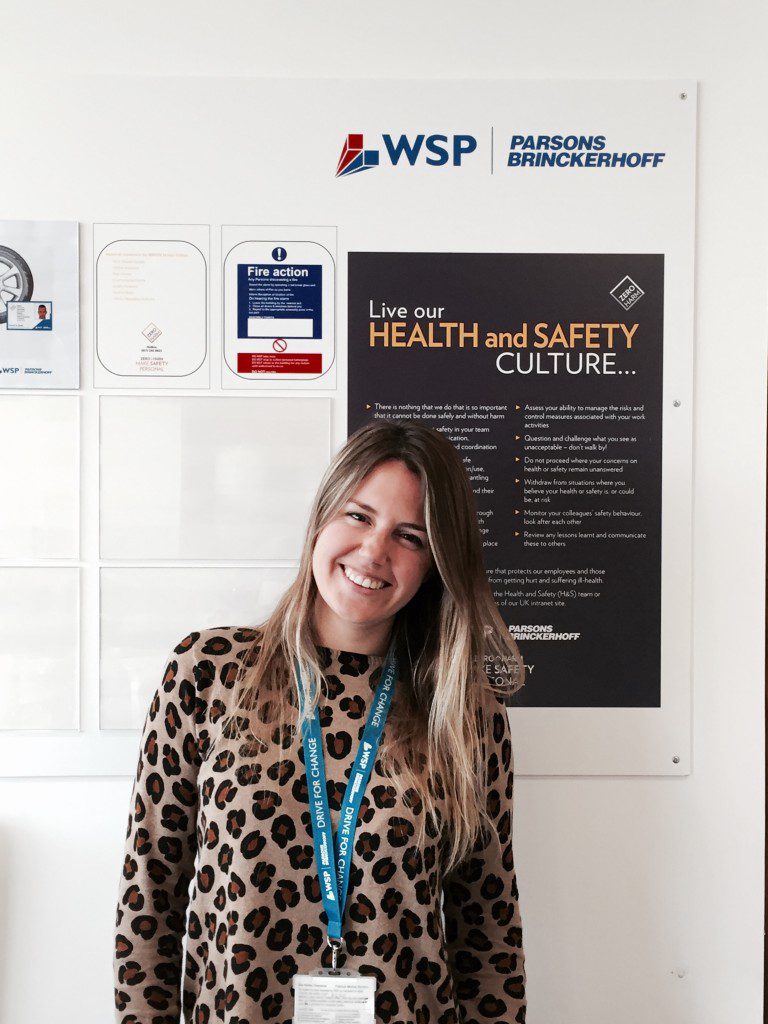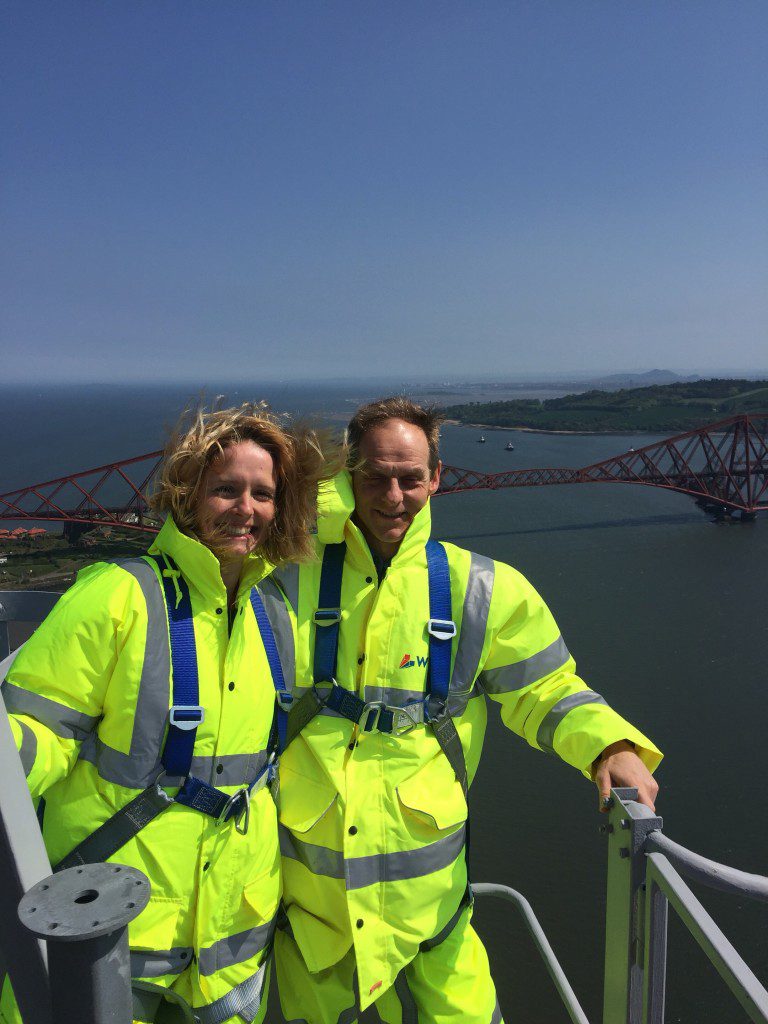
By Patricia Molina Benitez, graduate engineer at WSP | Parsons Brinckerhoff
Gender diversity is an issue before we even reach employment; in fact, it’s already an issue at university. To overcome this challenge, I believe we need a two pronged attack firstly to ensure enough women are studying engineering to begin with and then that they stay in the industry and can reach the highest levels of the profession, should they aspire to do so.
I was very happy that my employer WSP | Parsons Brinckerhoff has an annual target to hire a minimum of women each year. Whilst the industry average is still low, about 10% of the workforce is female; at my company it is much higher with some grad roles being a 50/50 split. There are definitely lots of opportunities out there, but more can be done to attract and retain women in the industry.
Taking off the hard hat
The question is why so few women? In my experience the way we market ourselves plays a huge part. In civil engineering we have a tendency to only show construction sites in marketing materials, even though many of us spend most of our week in an office. I definitely enjoy watching my designs being constructed, but that doesn’t mean I want to be on a construction site every day.
In reality, there are many more opportunities in engineering and I think we need to focus on this if we are to attract a more diverse range of people into the profession. We need to move away from the images of labour on site and emphasise the work completed by engineers to solve global problems like providing clean water and vital infrastructure.
Influencing the Influential
We need to spend more time updating the views of those that have the greatest influence on young people – teachers and parents. There is already some great work being done to show pupils the range of opportunities presented by engineering. At WSP | Parsons Brinckerhoff for instance, we have the “Launchpad? programme, which provides one to two week work placements for local pupils, aged between 14-19 years old, to inspire and encourage them to join the ranks of the nation’s problem-solvers.
I also believe that when looking at attracting a more diverse range of young people into our industry, we shouldn’t just be telling them how good civil, or any single engineering discipline is, we should tell them how great engineering is full stop! We just need that spark, that one thing that will make them look into engineering further.
Retaining talent and ending discrimination
The other problem is that at the higher ranks of the profession there simply isn’t a big enough pool of engineers to draw from. However, as a graduate I can see that there’s more of us entering the profession, so if we can find a way to retain this new pool of talent we should see more women at the upper levels. But of course, it isn’t as simple as that as some women will take some time off to have children. What we need to make sure is that this doesn’t signal the end of their career progression.
Those women who have proven themselves to be good engineers will have the drive to succeed, and taking maternity leave will not change this. So let’s support these women so they can pick up their career where they left off.
In terms of my aspirations for the future, I certainly don’t think being a woman will hold me back in my career aspirations. However, I definitely welcome unconscious bias training to help ensure female employees, and anyone from a minority group, are not at a disadvantage. In my opinion this is a much better way to go than introducing quotas encouraging positive discrimination. At the end of the day, surely we want to remove discrimination, not reverse it.


By Sarah Piscitelli, senior structural engineer at WSP | Parsons Brinckerhoff
Whist at school, I was always fascinated by bridges and this catalysed my desire to be an engineer. I was intrigued to discover more about how bridges were built and was particularly interested in the Forth Road Bridge when young. Maths and sciences were my strongest subjects at school so engineering was a natural fit, and led to me going to university to study it.
It was particularly evident that engineering was a male dominated industry during my years at University where there were six girls to every 100 boys in my course. But despite being one of the few women on the course, I’ve never felt that my gender held me back or has caused any problems. In fact, it’s the contrary.
It helps to be confident and focused and to not let yourself feel intimidated by a predominately male environment. I believe that we all, male and female, need to prove our own worth and build our expertise in order to be respected in the workplace and work our way up to a senior position.
I’ve always been very strong-willed and think this has helped my career progression, along with my enthusiasm to build relationships with both colleagues and clients.
Opportunities are definitely there for women in industry, particularly at graduate level where I have rarely seen much disparity.
We recently invited a P6 class from Tynewater Primary School in Pathhead to visit our Edinburgh office for a day to help them understand what engineering is and what opportunities are open to them if they choose this as a career.
At the start of the day, we invited the children to draw what they thought an engineer would look like and they all drew a man in a hard hat. We asked them to do the same again at the end of the day which resulted in a picture of a female engineer.
I felt this was a real breakthrough, and it is great to see that children are becoming aware that women can also fulfil an engineering role. It appeared that any gender barriers they perceived to exist were being broken down.
My advice to girls considering a career path in engineering is to approach your goals with courage and remember that no job is out of bounds – work hard, believe in yourself, and follow your goals.
Everyone should be treated as an equal no matter what grade role they have or what gender they are. I often find myself in a work situation where I am the only female and with lots of directors. However, I see this as my opportunity to shine. I love my job and I am proud of the company I work for. Confidence and enthusiasm gets you far in this industry.

By Samantha Somerville, junior technician at WSP | Parsons Brinckerhoff
I found out about the opportunity at WSP | Parsons Brinckerhoff in 2013 while still at school. I thrived in technology and design based courses so engineering felt like a natural fit.
Although civil engineering was not previously on my radar I’m now developing an exciting career path and busy learning new skills, which has included designing roads in Qatar.
I’ve experienced first-hand how many more males to females there are in the industry. There are only two females on my HNC engineering course at Telford College where I study one day a week, and whilst studying for my NC there was the only female. Despite there being a lot more females working with me at WSP | Parsons Brinckerhoff, there are still very few women working on-site where the majority are still males.
Since joining the firm I’ve had the opportunity to sample a wide range of engineering sectors, including rail, road, and computer aided design software – it’s so varied, which I love. I’ve worked on a number of high profile engineering projects throughout Scotland such as road design in Beccles and railway stations in Gleneagles, Dyce, Shotts, Newton and Dunblane.
Women think this sort of career path may only be of interest to males without taking the time to weigh it up as an option. Girls often assume only men enter this line of work, but there are females entering engineering courses and pursuing this career path too.
Whilst at school, I would advise girls who have an interest in engineering, technology and design to do some research into engineering as a career. It may be a perfect fit for them, and one they would regret not considering. It is definitely worth asking plenty of questions and weighing up your options.
If a young female chooses to enter the engineering sector, I would advise them to never be afraid of speaking out and to make a concerted effort to interact with new people, whether at work or in further study. It is the best way to immerse yourself in what you are learning and make quick progress, as well as making it easier to strike up relationships with new classmates or colleagues.











